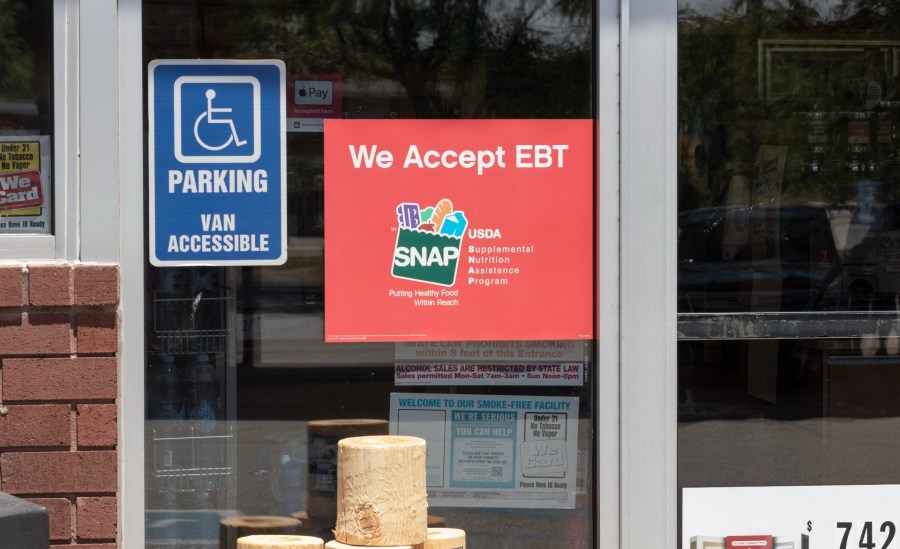With unprecedented polarization and partisan rancor at an all-time high in the electorate and Congress, the smart bet for 2024 would be on continued gridlock and the scant prospect of bipartisan compromise. But a funny thing happened on the way to the December recess. Last month, a bipartisan group of federal lawmakers bucked the partisan trend when they quickly advanced to reform the Workforce Innovation and Opportunity Act (WIOA), the law governing the nation’s public workforce system, which has languished for over a decade.
An overhaul of the law is long overdue. With in the U. S.
, enough available workers and lackluster , we need as many work-capable Americans as possible pursuing work. This addresses some long overdue federal reforms to shift incentives in the workforce system to empower working-age Americans to pursue work. Importantly, it signals agreement about ways that states could integrate social safety net and workforce development funding to streamline programs such as food stamps, child care, transportation, and job training into a single state agency.
In an ironic twist, the bipartisan proposal is a political throwback to the unexpected consensus forged in another era of intensely divided government nearly 30 years ago, when then-House Speaker Newt Gingrich (R-Ga. ) and Democratic President Bill Clinton came together to pass sweeping and instituted many of the welfare-to-work requirements now in effect today. Indeed, the current workforce development system is ripe for bipartisan reform.
This highly disconnected and complex system—with an alphabet soup of across numerous government agencies, all with distinct eligibility requirements—has kept millions of job seekers from pursuing meaningful work. The nation’s various welfare programs—which help millions of Americans feed their families, pay for housing, and access child and medical care—are often tied to work requirements. For many policymakers looking to overhaul and modernize anti-poverty programs, work requirements remain an intuitive solution.
But the unfortunate reality is that work requirements alone are not sufficient to overcome poverty: pairing work requirements with shoddy and ineffective workforce training leaves the most vulnerable individuals with scant hope of escaping poverty. Many of the most vulnerable Americans remain stuck in a morass of government programs without a clear path to gain the needed skills to pursue work. Of the more than people aged 25 to 54 not in the labor force, the vast majority are taking care of others, are ill or disabled, enrolled in college, or have other sound reasons for not seeking employment.
But a significant number — nearly 2. 3 million as of December — want to work but cannot find jobs that leverage their skills and aptitudes and allow them to contribute to society and the workforce. Instead, the aging policy infrastructure of our safety net system creates misaligned incentives that actually dissuade beneficiaries from pursuing work or earning a family-sustaining wage.
For example, as the various safety net benefits stack up, it creates a “ ” where a slight increase in earnings could abruptly disqualify an individual or family from receiving needed support. The economic value of the lost benefits can quickly exceed the wage increases. Much of the rhetoric surrounding welfare-to-work reform ignores the reality that the current system pushes too many Americans over a metaphorical cliff — and out of the workforce.
Indeed, falling off that cliff can actually increase reliance on a safety net. In 2019, the most recent data of participation in multiple federal safety net programs, (27 percent) received benefits from at least one safety net program. It’s hard to blame someone who wants to work for not accepting a job when welfare benefits are a better deal.
At its best, public policy should encourage individuals to embrace a “contribution mindset” and seek out opportunities, not avoid them, to reach their full potential. Instead of cliffs, our nation needs benefits slopes — a way to help Americans find purposeful work by tapering them off public benefits without jeopardizing family stability. Consider the state of Utah, which was the first in the union to put in place a “ ” approach to public benefits that integrates federal and state dollars for both safety nets and education and training assistance programs.
The state received a federal waiver in the 1990s to skirt bureaucratic red tape. Utah was able to redesign inefficient and ineffective federal programs to have and help its residents thrive. The “One Door” concept pioneered in Utah is .
House Higher Education and Workforce Development Subcommittee Chairman Burgess Owens (R-Utah) introduced legislation that would give states the flexibility to tailor federal benefits and workforce programs to meet the needs of their local communities and regional economies. The bill enables states to optimize the delivery of safety net and training benefits and services to help individuals transition from welfare into purposeful work. A policy coalition led by the is working in multiple states and at the federal level to push for a that considers safety nets as human services meant to support individuals on a path toward employment and self-sufficiency.
A are taking matters into their own hands and working to realign and modernize their investments in workforce development. But it will require action by Congress to grant federal waivers to enable states to fully integrate state and federal safety net and workforce development funding and service delivery under a single state agency. Make no mistake: reducing dependence on public benefits and boosting workforce outcomes are laudable policy aims.
But the current welfare-to-work system falls wildly short of both goals—and exacerbates the challenge of long-term unemployment and wage stagnation for the lowest-income Americans. Congress now has the means—and a unique window of political opportunity—to fix the outdated policies that perpetuate the broken welfare and workforce development systems. And it’s not a moment too soon for the millions of low-income families trapped in poverty.
.
From: thehill
URL: https://thehill.com/opinion/congress-blog/4406168-its-time-to-rethink-welfare-to-work-policies-this-bipartisan-workforce-bill-is-a-good-start/



